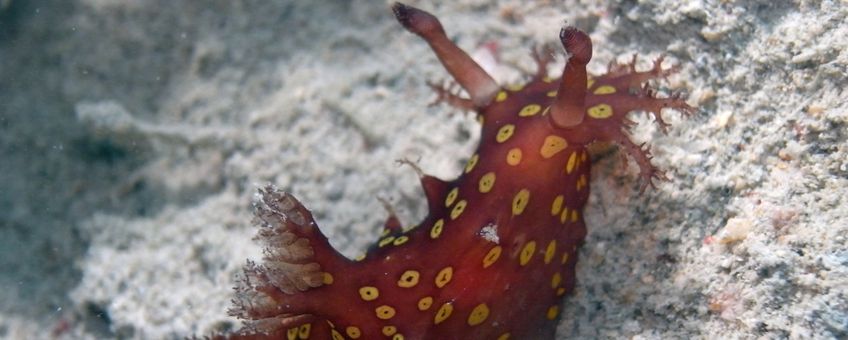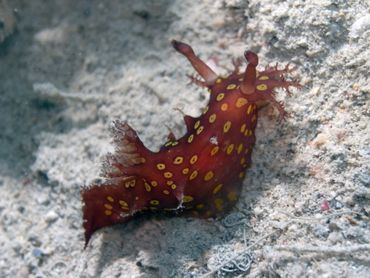
Divers are crazy about sea slugs. These animals are diverse, colorful, and perhaps most important of all: they are not that quick, which makes them easy to photograph. Just like birdwatchers enthusiastically travel to the strangest corners of The Netherlands for a blackpoll warbler or an obscure seagull species, there are also group chats in which the appearance of rare ‘nudis’ (nudibranchs) is shared with many exclamation marks.
That makes the animals extremely suitable for research with the help of citizen scientists. In the journal Ecology, Naturalis researcher Bert Hoeksema and sea slug expert Nathalie Yonow write about the species Plocamopherus ocellatus, which played a role in this.
Farasan
Ecology has a section in which biologists can describe unusual observations in more detail, and Hoeksema’s observation took place in the Red Sea, near the Saudi Arabian Farasan Islands. That is where this slug occurs naturally, although it is considered extremely rare. The species is mainly known as an invasive species in the Mediterranean Sea: far more observations are known from the Mediterranean Sea than from its natural distribution area.
P. ocellatus, just like some 750 other mollusk species, reached the Mediterranean Sea via the Suez Canal. Spanish researchers used the species for a citizen science study where it was a model for how invasive species spread: divers who came across one were asked to send in their photos by email. Like most canal travelers, it appears to be gradually spreading from the eastern to the western Mediterranean Sea. The most recent official observations were made off the coast of Turkey and Greece.
Rarity
 However, does that actually mean that the species is more common in the Mediterranean than in its original habitat? Hoeksema and his co-author Nathalie Yonow suspect that is not the case. There are simply far more underwater photographers living around the Mediterranean than around the Red Sea. Greece and Turkey are also more popular tourist destinations than, say, Sudan and Yemen. The biologists suggest that the so-called rarity of P. ocellatus in its original habitat is probably an artefact.
However, does that actually mean that the species is more common in the Mediterranean than in its original habitat? Hoeksema and his co-author Nathalie Yonow suspect that is not the case. There are simply far more underwater photographers living around the Mediterranean than around the Red Sea. Greece and Turkey are also more popular tourist destinations than, say, Sudan and Yemen. The biologists suggest that the so-called rarity of P. ocellatus in its original habitat is probably an artefact.
For divers, at least, the good news is there are scientists who can be thrilled by photos of sea slugs. That will only make the animals more popular still.
More information
- The article: Rarity in the native range of the Lessepsian migrant Plocamopherus ocellatus (Nudibranchia): fact or artifact?
Text: Naturalis Biodiversity Center
Photos: Prof. Bert Hoeksema, Naturalis Biodiversity Center and University of Groningen.
